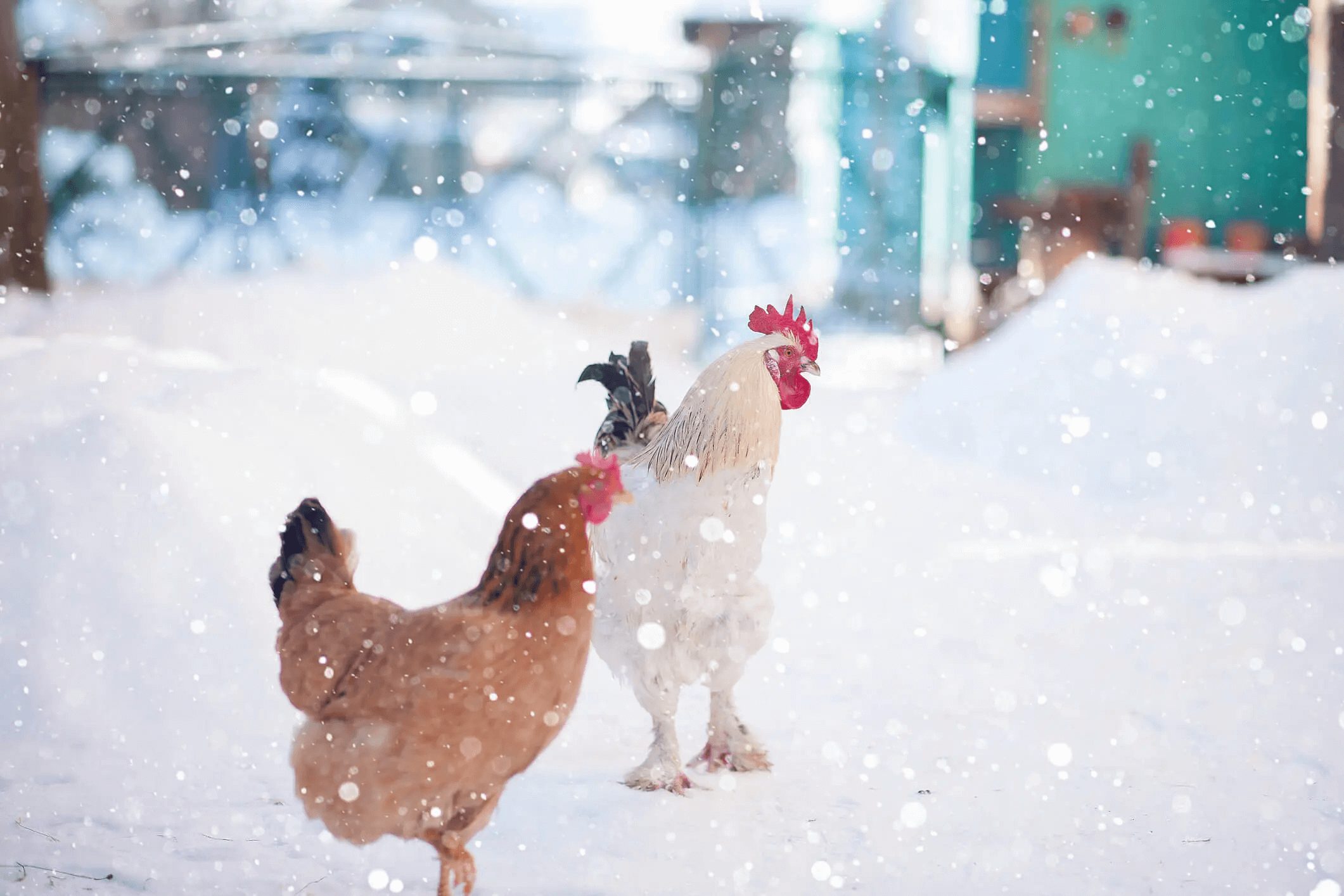
How to Raise Chickens in Winter
Keeping a flock of backyard chickens is fun and easy during the warmth of spring and summer. With plenty of forage available, your chickens will content themselves with strolling the yard, keeping pests in line and feed costs to a minimum. However, when the days get colder and you find yourself reaching for a sweater, you may start wondering how you’re going to care for your flock when the temperature drops.
Do Chickens Need Heat in the Winter?
Fortunately, chickens are much better equipped to tolerate the cold than humans, so though they may look cute in sweaters, their feathers do the best job of keeping them warm. Chickens have feathers that grow in insulating layers, allowing them to regulate their body temperature and stay comfortable in temperatures dropping into the teens.
As tempting as it may be to provide your chickens with electric heat sources, it can do more harm than good. If the temperature in the coop is significantly different than that outdoors, your chickens will be unable to perform their self-regulation. Heat lamps are also a fire risk, especially with straw and bedding around. There are much better ways to help your chickens make the most of their natural abilities.
What Do You Do With Chickens in the Winter?
When your chicken coop is insulated correctly, your birds will be able to heat it themselves. Chickens are remarkably efficient creatures, and they put off a surprising amount of warmth simply by digesting food. Plenty of high-quality, high-protein feed will let them serve as feathered furnaces to warm their house. In winter, it’s especially beneficial to feed your flock before they roost to capitalize on this benefit.
Since the cold will have your birds spending more time in the coop, make sure they have plenty of fresh bedding. Adding straw to nesting boxes is a safe, natural way to capture hens’ body heat, and it comes with the added benefit of helping to prevent eggs from freezing. Placing curtains around the nesting boxes will also help accomplish this goal.
Similarly, stacking bales of straw around the coop will help keep warmth inside, as will covering the coop in a tarp or house wrapping. Just be sure you don’t cut off any ventilation with these measures, as it is vital to keep fresh air moving through the coop so that moisture doesn’t build up.
Once you address the need for warmth, make sure your chickens’ other needs are met as well. You’ll want to be sure their water is fresh and unfrozen at all times. Your birds will probably be bored from spending time inside, but adding chicken swings or hanging a head of cabbage as a tetherball will give them the entertainment they crave during winter’s short, dark days.
Keep Chickens Warm in Winter With Balanced Nutrition
In deciding how to care for your chickens in the winter, the most crucial element is selecting a high-quality feed that provides the protein, vitamins and minerals they’re missing due to a lack of forage. The crumbles and pellets from Nature’s Best Organic Feeds are scientifically tested and proven to contain the optimal balance of nutrients for a strong, healthy flock.
Our chick, broiler/grower, and layer feeds are all Non-GMO Project Verified. Whether you’re nourishing a late crop of pullets or supporting your layers through the winter, a well-fed chicken is a warm, happy chicken. Make sure your birds are ready for the cold with a bag of Nature’s Best.